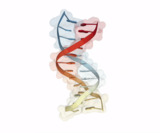
This resource explains the structure and function of DNA using PowerPoint. Videos and practice are linked into the presentation.
- Subject:
- Life Science
- Material Type:
- Lecture
- Author:
- Despina Mitsos
- Date Added:
- 07/13/2023

This resource explains the structure and function of DNA using PowerPoint. Videos and practice are linked into the presentation.
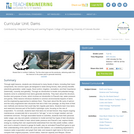
Through eight lessons, students are introduced to many facets of dams, including their basic components, the common types (all designed to resist strong forces), their primary benefits (electricity generation, water supply, flood control, irrigation, recreation), and their importance (historically, currently and globally). Through an introduction to kinetic and potential energy, students come to understand how dams generate electricity. They learn about the structure, function and purpose of locks, which involves an introduction to Pascal's law, water pressure and gravity. Other lessons introduce students to common environmental impacts of dams and the engineering approaches to address them. They learn about the life cycle of salmon and the many engineered dam structures that aid in their river passage, as they think of their own methods and devices that could help fish migrate past dams. Students learn how dams and reservoirs become part of the Earth's hydrologic cycle, focusing on the role of evaporation. To conclude, students learn that dams do not last forever; they require ongoing maintenance, occasionally fail or succumb to "old age," or are no longer needed, and are sometimes removed. Through associated hands-on activities, students track their personal water usage; use clay and plastic containers to model and test four types of dam structures; use paper cups and water to learn about water pressure and Pascal's Law; explore kinetic energy by creating their own experimental waterwheel from two-liter plastic bottles; collect and count a stream's insects to gauge its health; play an animated PowerPoint game to quiz their understanding of the salmon life cycle and fish ladders; run a weeklong experiment to measure water evaporation and graph their data; and research eight dams to find out and compare their original purposes, current status, reservoir capacity and lifespan. Woven throughout the unit is a continuing hypothetical scenario in which students act as consulting engineers with a Splash Engineering firm, assisting Thirsty County in designing a dam for Birdseye River.

In this video segment adapted from NOVA, scientists search for carbonized remains of plants preserved in lava flows to find out how long it has taken rain forests on Hawaii to regenerate after a volcanic eruption.
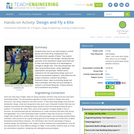
Students learn how to use wind energy to combat gravity and create lift by creating their own tetrahedral kites capable of flying. They explore different tetrahedron kite designs, learning that the geometry of the tetrahedron shape lends itself well to kites and wings because of its advantageous strength-to-weight ratio. Then they design their own kites using drinking straws, string, lightweight paper/plastic and glue/tape. Student teams experience the full engineering design cycle as if they are aeronautical engineers—they determine the project constraints, research the problem, brainstorm ideas, select a promising design and build a prototype; then they test and redesign to achieve a successful flying kite. Pre/post quizzes and a worksheet are provided.

Students learn about the types of possible loads, how to calculate ultimate load combinations, and investigate the different sizes for the beams (girders) and columns (piers) of simple bridge design. Students learn the steps that engineers use to design bridges: understanding the problem, determining the potential bridge loads, calculating the highest possible load, and calculating the amount of material needed to resist the loads.
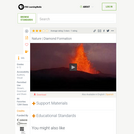
An expert describes the carbon composition of diamonds, as well as the conditions necessary for diamond formation in this video segment from Nature.

This Nature video offers an introduction to the socio-economic value of diamonds.

In this video adapted from ANDRILL, find out how geoscientists get through more than a dozen football fields of ice and water in order to study the rock and sediment beneath Antarctica.

In this video profile produced for Teachers' Domain, meet teacher Dustin Madden, an IŰ__óíupiaq who hopes to inspire students to take an active role in protecting the natural environment by giving them a foundation in math and science.
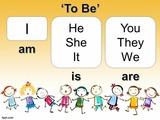
This document is about to be Verb and uses in order to apply in a correct way.

This video segment adapted from NASA's Goddard Space Flight Center discusses how a drought can have negative effects locally, for example by increasing the number of forest fires, and also globally, for example by impacting air quality thousands of miles away.

This video segment adapted from NOVA tells the tragic story of two Japanese seismologists who disagreed about the threat of earthquakes in the early twentieth century. Today, seismologists in California offer residents a probability of risk that an earthquake might occur.
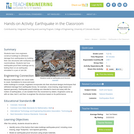
Students learn how engineers construct buildings to withstand damage from earthquakes by building their own structures with toothpicks and marshmallows. Students test how earthquake-proof their buildings are by testing them on an earthquake simulated in a pan of Jell-O(TM).

In this video segment adapted from NOVA, animations are used to show how the hills around Los Angeles were formed by earthquakes at small thrust faults that extend outward from the larger San Andreas fault.

Students learn the two main methods to measure earthquakes, the Richter Scale and the Mercalli Scale. They make a model of a seismograph a measuring device that records an earthquake on a seismogram. Students also investigate which structural designs are most likely to survive an earthquake. And, they illustrate an informational guide to the Mercalli Scale.
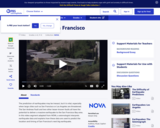
The history of earthquakes in the San Francisco Bay area is plotted on a digital map and analyzed in this video segment adapted from NOVA.
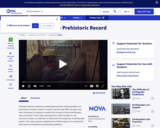
In this video segment adapted from NOVA, a geologist digs a trench along the San Andreas Fault to reveal three thousand years of earthquake history. Information from the layers of sediment may help geologists to predict earthquakes.
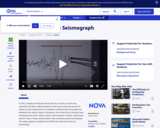
This video segment adapted from NOVA uses historical illustrations, photographs, and animations to explain how seismographs work, the difference between P and S waves, and the Richter scale.

This course is a fast-paced introduction to the C and C++ programming languages, with an emphasis on good programming practices and how to be an effective programmer in these languages. Topics include object-oriented programming, memory management, advantages of C and C++, optimization, and others. Students are given weekly coding assignments and a final project to hone their skills. Recommended for programmers with some background and experience in other languages.
This course is offered during the Independent Activities Period (IAP), which is a special 4-week term at MIT that runs from the first week of January until the end of the month.
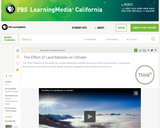
In this video produced by ThinkTV, explore the effects of land masses on local climate conditions, and learn about regional impacts of land-atmosphere interactions.